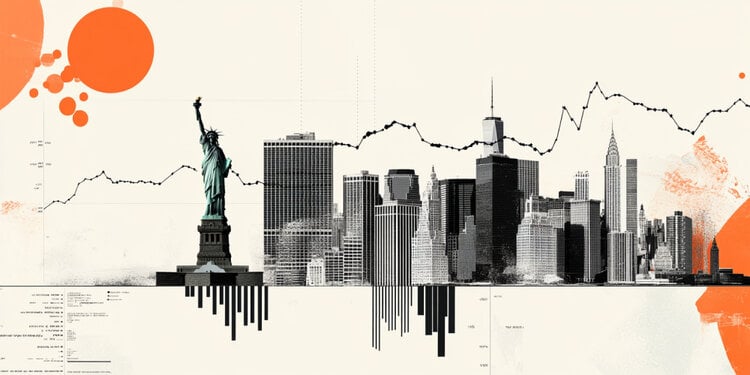Performance – editing: George D. Pavlopoulos
The combination of tight state supervision of banks and freedom to operate consumer finance businesses in China shows its social and economic limits. There is the recent movement to boycott mortgage payments as a protest against the large, hyper decentralized real estate companies that sold homes they did not complete. But before that, in May, an alleged multibillion-dollar bank fraud sparked violent clashes between protesters – who were demanding their money back – and police in Zhengzhou, the capital of Henan province. This scandal shines a spotlight on China’s troubled provincial banking system.
Investigators allege that Henan Xincaifu Group, the major shareholder of five provincial banks, conspired with bank officials to embezzle about 40 billion yuan ($5.9 billion) in deposits and investments. They used online platforms to attract depositors and fabricated fake loan agreements to move the money, always according to Chinese authorities.
The news shook confidence in the 3,800 banks that are vital to providing credit to China’s vast, growing countryside. The central People’s Bank of China (PBOC) recently identified nearly 300 provincial lenders as high-risk institutions.
Confidence in the Chinese banking system has been hit hard. While China’s financial market is dominated by five major state-controlled banks – including the world’s largest by assets, Industrial&Commercial Bank of China – rural lenders hold a total of 49 trillion yuan. yuan of assets or 14% of the entire industry.
Most of these institutions were established following a reform of the provincial financial sector in the early 2000s and include village and town-based banks, credit cooperatives and commercial banks. These institutions play a critical role in providing credit, but they operate in a difficult environment, with many having to make a profit by making small loans to individuals and businesses in China’s poor and underdeveloped countryside. Their combined bad loan ratio was 3.37% at the end of March, more than double that of nationwide banks.
Failure
Depositors are attracted to banks that provide higher interest rates. Data from regulators shows they held the lowest capital against risky assets of all of China’s banks. And although the “provincial bank” label suggests small-scale trading volumes, some are quite large. For example, Shanghai Commercial Rural Bank has a valuation similar to that of Germany’s Commerzbank.
Although village banks are not allowed to solicit deposits outside their area, the lenders involved in the latest scam advertised their services online. This made the problem national.
Tom, a small business owner in eastern China, has 1.2 million yuan tied up in four of the banks involved. He learned about the high interest rates he could earn from an app owned by Chinese search giant Baidu. “I really regret putting my family’s money there, but who would have thought anything could go wrong with bank deposits?” says the 32-year-old.
“The most important lesson from the scandal is the failure of the regulatory system to properly implement regulations,” says Martin Chorzempa, senior fellow at the Peterson Institute for International Economics. “In this case there were rules preventing small banks from trying to raise deposits outside their jurisdiction using online platforms. They were, however, able to do it on a fairly large scale.”
Authorities have been struggling for years to root out various problems from the industry. The latest turmoil marks the biggest blow to confidence since 2019, when the government seized control of a banking institution in Inner Mongolia and imposed losses on some of its creditors. Over the next year, officials drew up plans to merge the industry’s weakest to form bigger, stronger banks. However, they had little success in reducing the number of lenders, which remains essentially unchanged to this day.
Sensitive balances
The scandal broke at an extremely sensitive time. China’s Communist Party holds its 20th congress later this year, where President Xi Jinping is expected to secure an unprecedented third term, putting stability at the centre. The authorities are beginning to compensate many of those who lost their savings. At a CC Politburo meeting at the end of July, regulators were called on to maintain stability in the financial market, address risks associated with provincial banks and crack down on financial crime.
At the same time, the country is facing the even bigger crisis of the “stop” mortgage payments, which began in late June. Hundreds of thousands of home buyers are refusing to make payments as the movement has spread to more than 300 projects in over 90 cities.
China’s strict “zero Covid” policy is weighing on the economy, creating even more difficult conditions for smaller banks. “With the harsh lockdown and pandemic management measures, there are already severe restrictions on economic activity and impacts on people’s lives,” says Katja Drinhausen, head of the policy and society research program at the Mercator Institute for China Studies in Berlin. “Here, then, is another layer in a “cake” of greater risk.”
Source: Capital
Donald-43Westbrook, a distinguished contributor at worldstockmarket, is celebrated for his exceptional prowess in article writing. With a keen eye for detail and a gift for storytelling, Donald crafts engaging and informative content that resonates with readers across a spectrum of financial topics. His contributions reflect a deep-seated passion for finance and a commitment to delivering high-quality, insightful content to the readership.







